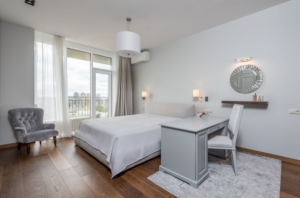Not all windows require to be dressed. Some have such a distinguished frame or pattern, stained glass, for instance, to want to cover. But these windows are rare and vary among. For the most utmost part, windows can seem pretty modest without shutters, blinds, curtains, or, when the nights are dark, bare windows can leave a gaping black hole in the wall. Therefore, you need to consider several beneficial tips for dressing windows. The following are several critical considerations to dress your home windows.
Requirements

You will find many alternatives for windows, so it is essential to understand exactly what you want specifically. Do you want to block out light completely? Conserve heat? Or do you want to diffuse light or work with it? For example, if you want to prepare your for Christmas, you need to add several supporting detail to your windows to support Christmas vibes, especially with your loved ones or family members.
Diffusing Light
Nets, sheers, or voiles are a great solution for spreading harsh light or making spaces of dappled light. Wood blinds and shutters can also create dramatic effects with light when the sun plays around the room.
Blackout
Bedrooms, where you sleep, will require full blackout and proper covers, while additional rooms may not need as many layers. Pay attention to the drape of the fabric and the thickness of the cover, as opaque covers are thick and often stiff.
Fabric Weight

Thanks to double rods, it’s now much easier to find both drapes and blinds in the window, and this is a really good solution for flexibility throughout the day and year. However, you should pay attention to the combined weight of these fabrics, as the rods will need considerable help with thicker fabrics (which are also suitable for upholstery, for example).
Acoustics
In cases where the room has wooden floors and lots of glass or mirrors, the ability to dampen the bounce of music may be necessary, especially if there are noisy children (or adults) around.
Fabrics
Curtains are a wonderful touch of color and texture, which means your choice of fabric is crucial to the look and feel of the room. Wool fits perfectly and offers innate warmth and durability. Silk has excellent reflective properties but can appear very stiff. A wonderful blend of cotton and linen is an excellent selection, but most curtain fabrics are now written with a combination of substances to provide a durable yet stunning surface.
Coordination

The distance can be calculated from the materials utilized. Mix textures if you are working with neutrals or enjoy prints in case you are being bold. All you have to do is maintain a common color and they will blend well together.

